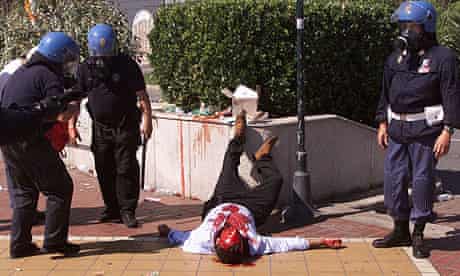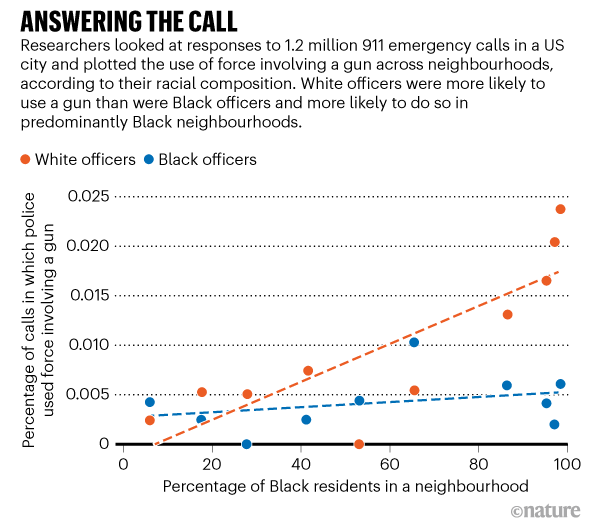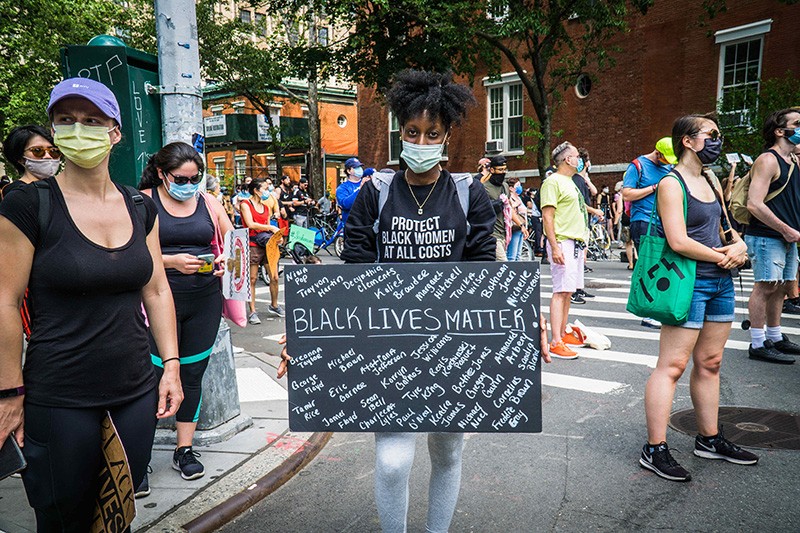It was just before midnight when the first police officer hit Mark Covell, swiping his truncheon down on his left shoulder. Covell did his best to yell out in Italian that he was a journalist but, within seconds, he was surrounded by riot-squad officers thrashing him with their sticks. For a while, he managed to stay on his feet but then a baton blow to the knee sent him crashing to the pavement.
Lying on his face in the dark, bruised and scared, he was aware of police all around him, massing to attack the Diaz Pertini school building where 93 young demonstrators were bedding down on the floor for the night. Covell's best hope was that they would break through the chain around the front gates without paying him any more attention. If that happened, he could get up and limp across the street to the safety of the Indymedia centre, where he had spent the past three days filing reports on the G8 summit and on its violent policing.
It was at that moment that a police officer sauntered over to him and kicked him in the chest with such force that the entire lefthand side of his rib cage caved in, breaking half-a-dozen ribs whose splintered ends then shredded the membrane of his left lung. Covell, who is 5ft 8in and weighs less than eight stone, was lifted off the pavement and sent flying into the street. He heard the policeman laugh. The thought formed in Covell's mind: "I'm not going to make it."
The riot squad were still struggling with the gate, so a group of officers occupied the time by strolling over to use Covell as a football. This bout of kicking broke his left hand and damaged his spine. From somewhere behind him, Covell heard an officer shout that this was enough - "Basta! Basta!" - and he felt his body being dragged back on to the pavement.
Now, an armoured police van broke through the school gates and 150 police officers, most wearing crash helmets and carrying truncheons and shields, poured into the defenceless building. Two officers stopped to deal with Covell: one cracked him round the head with his baton; the other kicked him several times in the mouth, knocking out a dozen teeth. Covell passed out.
There are several good reasons why we should not forget what happened to Covell, then aged 33, that night in Genoa. The first is that he was only the beginning. By midnight on , those police officers were swarming through all four floors of the Diaz Pertini building, dispensing their special kind of discipline to its occupants, reducing the makeshift dormitories to what one officer later described as "a Mexican butcher's shop". They and their colleagues then illegally incarcerated their victims in a detention centre, which became a place of dark terror.
The second is that, seven years later, Covell and his fellow victims are still waiting for justice. On Monday, 15 police, prison guards and prison medics finally were convicted for their part in the violence - although it emerged yesterday that none of them would actually serve prison terms. In Italy, defendants don't go to jail until they have exhausted the appeals process; and in this case, the convictions and sentences will be wiped out by a statute of limitations next year. Meanwhile, the politicians who were responsible for the police, prison guards and prison medics have never had to explain themselves. Fundamental questions about why this happened remain unanswered - and they hint at the third and most important reason for remembering Genoa. This is not simply the story of law officers running riot, but of something uglier and more worrying beneath the surface.
The fact that this story can be told at all is testament to seven years of hard work, led by a dedicated and courageous public prosecutor, Enrico Zucca. Helped by Covell as well as his own staff, Zucca has gathered hundreds of witness statements and analysed 5,000 hours of video as well as thousands of photographs. Pieced together, they tell an irrefutable tale, which began to unfold as Covell lay bleeding on the ground.
The police poured into the Diaz Pertini school. Some of them were shouting "Black Bloc! We're going to kill you", but if they genuinely believed they were confronting the notorious Black Bloc of anarchists who had caused violent mayhem in parts of the city during demonstrations earlier in the day, they were mistaken. The school had been provided by the Genoa city council as a base for demonstrators who had nothing to do with the anarchists: they had even posted guards to make sure that none of them came in.
One of the first to see the riot squad bursting in was Michael Gieser, a 35-year-old Belgian economist, who subsequently described how he had just changed into his pyjamas and was queuing for the bathroom with his toothbrush in his hand when the raid began. Gieser believes in the power of dialogue and, at first, he walked towards them saying, "We need to talk." He saw the padded jackets, the riot clubs, the helmets and the bandanas concealing the policemen's faces, changed his mind and ran up the stairs to escape.
Others were slower. They were still in their sleeping bags. A group of 10 Spanish friends in the middle of the hall woke up to find themselves being battered with truncheons. They raised their hands in surrender. More officers piled in to beattheir heads, cutting and bruising and breaking limbs, including the arm of a 65-year-old woman. At the side of the room, several young people were sitting at computers, sending emails home. One of them was Melanie Jonasch, a 28-year-old archaeology student from Berlin, who had volunteered to help out in the building and had not even been on a demonstration.
She still cannot remember what happened. But numerous other witnesses have described how officers set upon her, beating her head so hard with their sticks that she rapidly lost consciousness. When she fell to the ground, officers circled her, beating and kicking her limp body, banging her head against a near-by cupboard, leaving her finally in a pool of blood. Katherina Ottoway, who saw this happen, recalled: "She was trembling all over. Her eyes were open but upturned. I thought she was dying, that she could not survive this."
None of those who stayed on the ground floor escaped injury. As Zucca later put it in his prosecution report: "In the space of a few minutes, all the occupants on the ground floor had been reduced to complete helplessness, the groans of the wounded mingling with the sound of calls for an ambulance." In their fear, some victims lost control of their bowels. Then the officers of the law moved up the stairs. In the first-floor corridor they found a small group, including Gieser, still clutching his toothbrush: "Someone suggested lying down, to show there was no resistance. So I did. The police arrived and began beating us, one by one. I protected my head with my hands. I thought, 'I must survive.' People were shouting, 'Please stop.' I said the same thing ... It made me think of a pork butchery. We were being treated like animals, like pigs."
Officers broke down doors to the rooms leading off the corridors. In one, they found Dan McQuillan and Norman Blair, who had flown in from Stansted to show their support for, as McQuillan put it, "a free and equal society with people living in harmony with each other". The two Englishmen and their friend from New Zealand, Sam Buchanan, had heard the police attack on the ground floor and had tried to hide their bags and themselves under some tables in the corner of the dark room. A dozen officers broke in, caught them in a spotlight and, even as McQuillan stood up with his hands raised saying, "Take it easy, take it easy," they battered them into submission, inflicting numerous cuts and bruises and breaking McQuillan's wrist. Norman Blair recalled: "I could feel the venom and hatred from them."
Gieser was out in the corridor: "The scene around me was covered in blood, everywhere. A policeman shouted 'Basta!'. This word was like a window of hope. I understood it meant 'enough'. And yet they didn't stop. They continued with pleasure. In the end, they did stop, but it was like taking a toy away from a child, against their will."
By now, there were police officers on all four floors of the building, kicking and battering. Several victims describe a sort of system to the violence, with each officer beating each person he came across, then moving on to the next victim while his colleague moved up to continue beating the first. It seemed important that everybody must be hurt. Nicola Doherty, 26, a care worker from London, later described how her partner, Richard Moth, lay across her to protect her: "I could just hear blow after blow on his body. The police were also leaning over Rich so they could hit the parts of my body which were exposed." She tried to cover her head with her arm: they broke her wrist.
In one corridor, they ordered a group of young men and women to kneel, the easier to batter them around the head and shoulders. This was where Daniel Albrecht, a 21-year-old cello student from Berlin, had his head beaten so badly that he needed surgery to stop bleeding in his brain. Around the building, officers flipped their batons around, gripping the far end and using the right-angled handle as a hammer.
And in among this relentless violence, there were moments when the police preferred humiliation: the officer who stood spread-legged in front of a kneeling and injured woman, grabbed his groin and thrust it into her face before turning to do the same to Daniel Albrecht kneeling beside her; the officer who paused amid the beatings and took a knife to cut off hair from his victims, including Nicola Doherty; the constant shouting of insults; the officer who asked a group if they were OK and who reacted to the one who said "No" by handing out an extra beating.
A few escaped, at least for a while. Karl Boro made it up on to the roof but then made the mistake of coming back into the building, where he was treated to heavy bruising to his arms and legs, a fractured skull, and bleeding in his chest cavity. Jaraslaw Engel, from Poland, managed to use builders' scaffolding to get out of the school, but he was caught in the street by some police drivers who smashed him over the head, laid him on the ground and stood over him smoking while his blood ran out across the Tarmac.
Two of the last to be caught were a pair of German students, Lena Zuhlke, 24, and her partner Niels Martensen. They had hidden in a cleaners' cupboard on the top floor. They heard the police approaching, drumming their batons against the walls of the stairs. The cupboard door came open, Martensen was dragged out and beaten by a dozen officers standing in a semicircle around him. Zuhlke ran across the corridor and hid in the loo. Police officers saw her and followed her and dragged her out by her dreadlocks.
In the corridor, they set about her like dogs on a rabbit. She was beaten around the head then kicked from all sides on the floor, where she felt her rib cage collapsing. She was hauled up against the wall where one officer kneed her in the groin while others carried on lashing her with their batons. She slid down the wall and they hit her more on the ground: "They seemed to be enjoying themselves and, when I cried out in pain, it seemed to give them even more pleasure."
Police officers found a fire extinguisher and squirted its foam into Martensen's wounds. His partner was dragged by her hair and tossed down the stairs head-first. Eventually, they dragged Zuhlke into the ground-floor hall, where they had gathered dozens of prisoners from all over the building in a mess of blood and excrement. They threw her on top of two other people. They were not moving, and Zuhlke drowsily asked them if they were alive. They did not reply, and she lay there on her back, unable to move her right arm, unable to stop her left arm and her legs twitching, blood seeping out of her head wounds. A group of police officers walked by, and each one lifted the bandana which concealed his identity, leaned down and spat on her face.
Why would law officers behave with such contempt for the law? The simple answer may be the one which was soon being chanted outside the school building by sympathetic demonstrators who chose a word which they knew the police would understand: "Bastardi! Bastardi!" But something else was happening here - something that emerged more clearly over the next few days.
Covell and dozens of other victims of the raid were taken to the San Martino hospital, where police officers walked up and down the corridors, slapping their clubs into the palms of their hands, ordering the injured not to move around or look out of the window, keeping handcuffs on many of them and then, often with injuries still untended, shipping them across the city to join scores of others, from the Diaz school and from the street demonstrations, detained at the detention centre in the city's Bolzaneto district.
The signs of something uglier here were apparent first in superficial ways. Some officers had traditional fascist songs as ringtones on their mobile phones and talked enthusiastically about Mussolini and Pinochet. Repeatedly, they ordered prisoners to say "Viva il duce". Sometimes, they used threats to force them to sing fascist songs: "Un, due, tre. Viva Pinochet!"
The 222 people who were held at Bolzaneto were treated to a regime later described by public prosecutors as torture. On arrival, they were marked with felt-tip crosses on each cheek, and many were forced to walk between two parallel lines of officers who kicked and beat them. Most were herded into large cells, holding up to 30 people. Here, they were forced to stand for long periods, facing the wall with their hands up high and their legs spread. Those who failed to hold the position were shouted at, slapped and beaten. Mohammed Tabach has an artificial leg and, unable to hold the stress position, collapsed and was rewarded with two bursts of pepper spray in his face and, later, a particularly savage beating. Norman Blair later recalled standing like this and a guard asking him "Who is your government?" "The person before me had answered 'Polizei', so I said the same. I was afraid of being beaten."
Stefan Bauer dared to answer back: when a German-speaking guard asked where he was from, he said he was from the European Union and he had the right to go where he wanted. He was hauled out, beaten, given a face full of pepper spray, stripped naked and put under a cold shower. His clothes were taken away and he was returned to the freezing cell wearing only a flimsy hospital gown.
Shivering on the cold marble floors of the cells, the detainees were given few or no blankets, kept awake by guards, given little or no food and denied their statutory right to make phone calls and see a lawyer. They could hear crying and screaming from other cells.
Men and women with dreadlocks had their hair roughly cut off to the scalp. Marco Bistacchia was taken to an office, stripped naked, made to get down on all fours and told to bark like a dog and to shout "Viva la polizia Italiana!" He was sobbing too much to obey. An unnamed officer told the Italian newspaper La Repubblica that he had seen brother officers urinating on prisoners and beating them for refusing to sing Faccetta Nera, a Mussolini-era fascist song.
Ester Percivati, a young Turkish woman, recalled guards calling her a whore as she was marched to the toilet, where a woman officer forced her head down into the bowl and a male jeered "Nice arse! Would you like a truncheon up it?" Several women reported threats of rape, anal and vaginal.
Even the infirmary was dangerous. Richard Moth, covered in cuts and bruises after lying on top of his partner, was given stitches in his head and legs without anaesthetic - "an extremely painful and disturbing experience. I had to be held down." Prison medical staff were among those convicted of abuse on Monday.
All agree that this was not an attempt to get the detainees to talk, simply an exercise in creating fear. And it worked. In statements, prisoners later described their feeling of helplessness, of being cut off from the rest of the world in a place where there was no law and no rules. Indeed, the police forced their captives to sign statements, waiving all their legal rights. One man, David Larroquelle, testified that he refused and had three of his ribs broken. Percivati also refused and her face was slammed into the office wall, breaking her glasses and making her nose bleed.
The outside world was treated to some severely distorted accounts of all this. Lying in San Martino hospital the day after his beating, Covell came round to find his shoulder being shaken by a woman who, he understood, was from the British embassy. It was only when the man with her started taking photographs that he realised she was a reporter, from the Daily Mail. Its front page the next day ran an entirely false report describing him as having helped mastermind the riots. (Four long years later, the Mail eventually apologised and paid Covell damages for invasion of privacy.)
While his citizens were being beaten and tormented in illegal detention, spokesmen for the then prime minister, Tony Blair, declared: "The Italian police had a difficult job to do. The prime minister believes that they did that job."
The Italian police themselves fed the media with a rich diet of falsehood. Even as the bloody bodies were being carried out of the Diaz Pertini building on stretchers, police were telling reporters that the ambulances lined up in the street were nothing to do with the raid, and/or that the very obviously fresh injuries were old, and that the building had been full of violent extremists who had attacked officers.
The next day, senior officers held a press conference at which they announced that everybody in the building would be charged with aggressive resistance to arrest and conspiracy to cause destruction. In the event, the Italian courts dismissed every single attempted charge against every single person. That included Covell. Police attempts to charge him with a string of very serious offences were described by the public prosecutor, Enrico Zucca, as "grotesque".
At the same press conference, police displayed an array of what they described as weaponry. This included crowbars, hammers and nails which they themselves had taken from a builder's store next to the school; aluminium rucksack frames, which they presented as offensive weapons; 17 cameras; 13 pairs of swimming goggles; 10 pen-knives; and a bottle of sun-tan lotion. They also displayed two Molotov cocktails which, Zucca later concluded, had been found by police earlier in the day in another part of the city and planted in the Diaz Pertini building as the raid ended.
This public dishonesty was part of a wider effort to cover up what had happened. On the night of the raid, a force of 59 police entered the building opposite the Diaz Pertini, where Covell and others had been running their Indymedia centre and where, crucially, a group of lawyers had been based, gathering evidence about police attacks on the earlier demonstrations. Officers went into the lawyers' room, threatened the occupants, smashed their computers and seized hard drives. They also removed anything containing photographs or video tape.
With the courts refusing to charge the detainees, the police secured an order to deport all of them from the country, banning them from returning for five years. Thus, the witnesses were removed from the scene. Like the attempted charges, all the deportation orders were subsequently dismissed as illegal by the courts.
Zucca then fought his way through years of denial and obfuscation. In his formal report, he recorded that all the senior officers involved were denying playing any part: "Not a single official has confessed to holding a substantial command role in any aspects of the operation." One senior officer who was videoed at the scene explained that he was off duty and had just turned up to make sure his men were not being injured. Police statements were themselves changeable and contradictory, and were overwhelmingly contradicted by the evidence of victims and numerous videos: "Not a single one of the 150 officers reportedly present has provided precise information regarding an individual episode."
Without Zucca, without the robust stance of the Italian courts, without Covell's intensive work assembling video records of the Diaz raid, the police might well have evaded responsibility and secured false charges and prison sentences against scores of their victims. Apart from the Bolzaneto trial which finished on Monday, 28 other officers, some very senior, are on trial for their part in the Diaz raid. And yet, justice has been compromised.
No Italian politician has been brought to book, in spite of the strong suggestion that the police acted as though somebody had promised them impunity. One minister visited Bolzaneto while the detainees were being mistreated and apparently saw nothing or, at least, saw nothing he thought he should stop. Another, Gianfranco Fini, former national secretary of the neo-fascist MSI party and the then deputy prime minister, was - according to media reports at the time - in police headquarters. He has never been required to explain what orders he gave.
Most of the several hundred law officers involved in Diaz and Bolzaneto have escaped without any discipline or criminal charge. None has been suspended; some have been promoted. None of the officers who were tried over Bolzaneto has been charged with torture - Italian law does not recognise the offence. Some senior officers who were originally going to be charged over the Diaz raid escaped trial because Zucca was simply unable to prove that a chain of command existed. Even now, the trial of the 28 officers who have been charged is in jeopardy because the prime minister, Silvio Berlusconi, is pushing through legislation to delay all trials dealing with events that occurred before . Nobody has been charged with the violence inflicted on Covell. And as one of the victims' lawyers, Massimo Pastore, put it:
"Nobody wants to listen to what this story has to say. That is about fascism. There are plenty of rumours that the police and carabinieri and prison staff belonged to fascist groups, but no evidence to support that. Pastore argues that that misses the bigger point: "It is not just a matter of a few drunken fascists. This is mass behaviour by the police. No one said 'No.' This is a culture of fascism." At its heart, this involved what Zucca described in his report as "a situation in which every rule of law appears to have been suspended."
Fifty-two days after the attack on the Diaz school, 19 men used planes full of passengers as flying bombs and shifted the bedrock of assumptions on which western democracies had based their business. Since then, politicians who would never describe themselves as fascists have allowed the mass tapping of telephones and monitoring of emails, detention without trial, systematic torture, the calibrated drowning of detainees, unlimited house arrest and the targeted killing of suspects, while the procedure of extradition has been replaced by "extraordinary rendition". This isn't fascism with jack-booted dictators with foam on their lips. It's the pragmatism of nicely turned-out politicians. But the result looks very similar. Genoa tells us that when the state feels threatened, the rule of law can be suspended. Anywhere.






